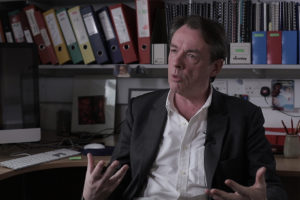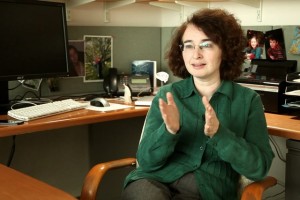Dynamic Causal Modelling
Neuroscientist Karl Friston on functional specialization of different brain areas, brain hierarchy, and the co...
Can you engineer elastic tissues? How to overcome immune rejection of organs? Can you enable the ability of cells to differentiate? Professor of Chemical and Biomedical Engineering at Massachusetts Institute of Technology Robert Langer speaks on challenges of modern techniques in medicine.
Second area in tissue engineering is actually you could have what I call a polymer scaffold, which could be in any shape. You could put cells on it and once the cells were there, they actually organize themselves, creating new tissue or organ, could be new cartilage, bone, could be human skin for burn victims or patients with diabetic skin ulcers. So the challenge is : A) designing the right material that cells will stick to B) making the right what I call ‘construct’ which is in the right shape and the right organization. For example, if you’re going to make cartilage maybe you’d want to make it in the form of a nose or you might want to make it in the form of an ear, depending on what the goals are.
One very popular technique that’s gotten a lot of attention lately is three-dimensional printing, 3D printing, because that gives you the ability to make certain types of intricate structures. But there’re many others too. There’s different ways of making foams, of making fibers, of making nanopattern systems. So there are many, many different materials challenges both from the standpoint of the chemistry and the manufacturing and engineering. Well, there’re a lot of challenges, I mean, from the material side number one — you want to make sure that the materials are safe and sometimes you are dealing with new chemistry and you don’t know until you test it. Secondly — you want to make sure that the materials interact with cells well and do what you want. Third — you want to make sure in many cases, if the materials biodegrade, that they go away because you really don’t want them there forever, you want them to do their job and then disappear.
I’m very excited about the area of tissue engineering, I think there are so many diseases that you can’t treat with the drug, so if you could help people with liver failure, spinal cord repair, you know, or certain types of diabetes, I think it could just be a wonderful thing. And I think the science that’s going on in this area is very exciting, you know, there’s wonderful biology, new stem cell biology, there’s terrific material science going on. So I think from both the scientific standpoint and a medical standpoint this is an area that’s of great importance.

Neuroscientist Karl Friston on functional specialization of different brain areas, brain hierarchy, and the co...

Biogerontologist David Gems on the innate plasticity in aging, senolytic drugs and whether we should expect dr...

Harvard Prof. Anna Krichevsky on role of microRNAs in cell differentiation, oncomiRs, and clinical trials